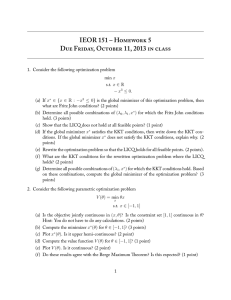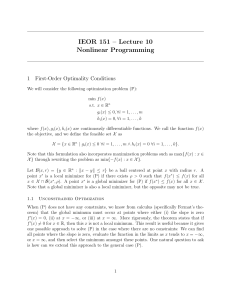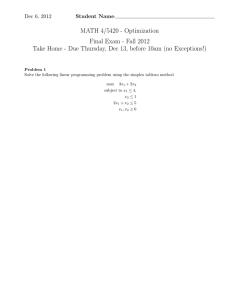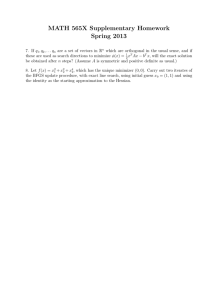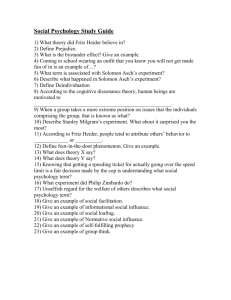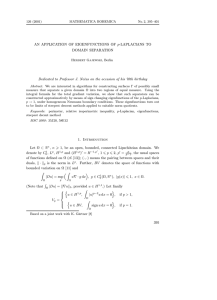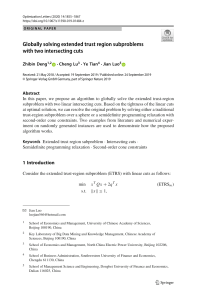IEOR 151 – L 9 O R 1 Nonlinear Programming
advertisement
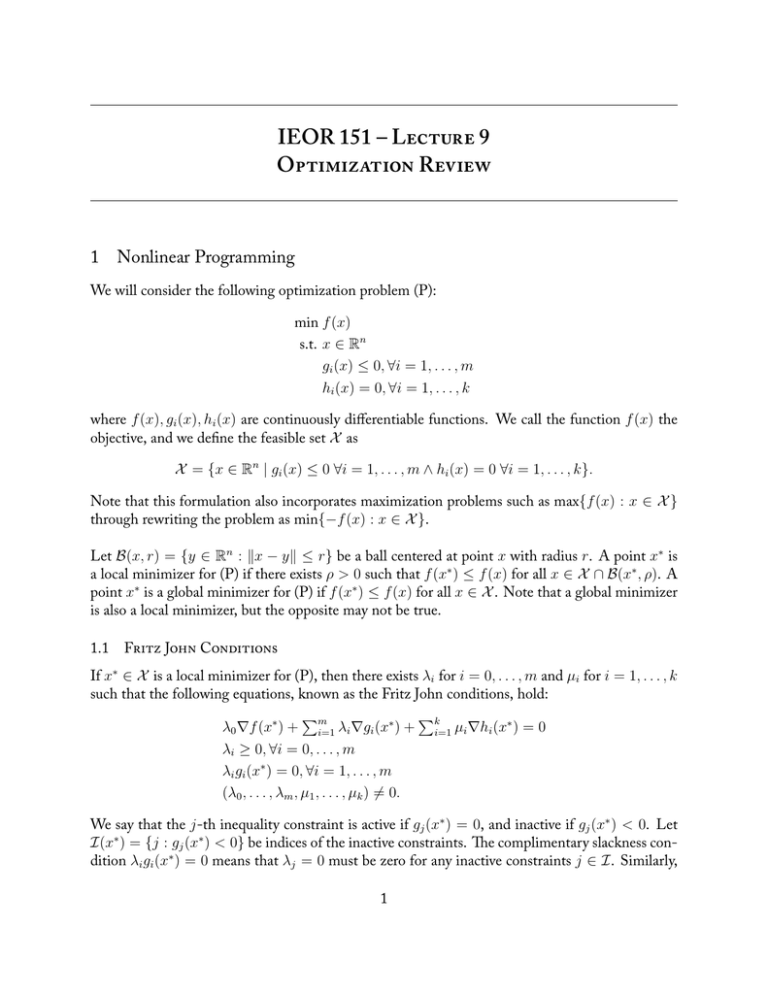
IEOR 151 – L 9
O R
1
Nonlinear Programming
We will consider the following optimization problem (P):
min f (x)
s.t. x ∈ Rn
gi (x) ≤ 0, ∀i = 1, . . . , m
hi (x) = 0, ∀i = 1, . . . , k
where f (x), gi (x), hi (x) are continuously differentiable functions. We call the function f (x) the
objective, and we define the feasible set X as
X = {x ∈ Rn | gi (x) ≤ 0 ∀i = 1, . . . , m ∧ hi (x) = 0 ∀i = 1, . . . , k}.
Note that this formulation also incorporates maximization problems such as max{f (x) : x ∈ X }
through rewriting the problem as min{−f (x) : x ∈ X }.
Let B(x, r) = {y ∈ Rn : ∥x − y∥ ≤ r} be a ball centered at point x with radius r. A point x∗ is
a local minimizer for (P) if there exists ρ > 0 such that f (x∗ ) ≤ f (x) for all x ∈ X ∩ B(x∗ , ρ). A
point x∗ is a global minimizer for (P) if f (x∗ ) ≤ f (x) for all x ∈ X . Note that a global minimizer
is also a local minimizer, but the opposite may not be true.
1.1
F J C
If x∗ ∈ X is a local minimizer for (P), then there exists λi for i = 0, . . . , m and µi for i = 1, . . . , k
such that the following equations, known as the Fritz John conditions, hold:
∑k
∑
∗
∗
λ0 ∇f (x∗ ) + m
i=1 µi ∇hi (x ) = 0
i=1 λi ∇gi (x ) +
λi ≥ 0, ∀i = 0, . . . , m
λi gi (x∗ ) = 0, ∀i = 1, . . . , m
(λ0 , . . . , λm , µ1 , . . . , µk ) ̸= 0.
We say that the j-th inequality constraint is active if gj (x∗ ) = 0, and inactive if gj (x∗ ) < 0. Let
I(x∗ ) = {j : gj (x∗ ) < 0} be indices of the inactive constraints. e complimentary slackness condition λi gi (x∗ ) = 0 means that λj = 0 must be zero for any inactive constraints j ∈ I. Similarly,
1
we denote the indices of the active constraints as J (x∗ ) = {1, . . . , m} \ I(x∗ ).
e Fritz John conditions are necessary (but not sufficient) for optimality. ere are a few important
points to note.
1. It is possible for the Fritz John conditions to hold at some point x∗ that is not a minimizer. For
instance, if x∗ ∈ X is a point such that ∇hi (x∗ ) for all i = 1, . . . , k are linearly dependent,
then x∗ ∈ X satisfies the Fritz John conditions regardless of whether it is a minimizer.
2. If λ0 = 0 then the minimizer x∗ is independent of the objective f (x). Additionally, it must
be that the ∇gj (x∗ ) for all j ∈ J (x∗ ) and ∇hi (x∗ ) for all i = 1, . . . , k must be linearly dependent. (Recall
∑ that a finite set of vectors vi are linearly independent if the only coefficients
ai that solve i ai vi = 0 are ai = 0 for all i.) is is not a positive situation because it means
that the optimization problem (P) may not be modeling what we are interested in.
ese points are important enough that they require further elaboration. Basically, if the constraints are not well-behaved, then either a computational algorithm will have trouble with finding
a minimizer or the computed value will not depend upon the objective. What would be more useful is a necessary condition for local optimality, but we will need to ensure that the constraints are
well-behaved.
1.2
C Q
If we want optimality conditions like the Fritz John conditions to actually be indicative of optimality, we require the constraints to be well-behaved. ere are a number of mathematical conditions that ensure this. e simplest is arguably the Linear Independence Constraint Qualification
(LICQ). e LICQ holds at a point x if ∇gj (x) for all j ∈ J (x) and ∇hi (x) for all i = 1, . . . , k
are linearly independent.
Under LICQ at x∗ , we have that λ0 ̸= 0 in the Fritz John conditions for a local minimizer x∗ ∈ X .
is means that a local optimizer will depend upon the objective. Also, we cannot have a situation
in which an arbitrary point with LICQ x∗ satisfies the Fritz John conditions.
If the objective f (x) is convex, the inequality constraints gi (x) ≤ 0 are convex, and hi (x) are affine
functions, then Slater’s condition is another situation that implies the constraints are well-behaved.
Slater’s condition is that there exists a point x such that gi (x) < 0 for all i = 1, . . . , m and hi (x) = 0
for all i = 1, . . . , k. e intuition is that the feasible set X is convex and has an interior.
1.3
K-K-T C
If LICQ holds at a point x∗ ∈ X , then the Karush-Kuhn-Tucker (KKT) conditions are necessary
for local optimality of x∗ . e KKT conditions are the Fritz John conditions with λ0 = 1 and with
the positivity constraints (λ0 , . . . , λm , µ1 , . . . , µk ) ̸= 0 removed. Note that satisfaction of the KKT
conditions at a point x∗ ∈ X is also necessary for global optimality of the point.
2
